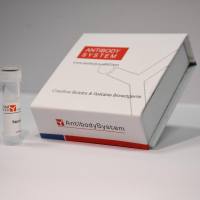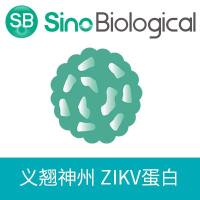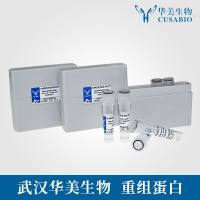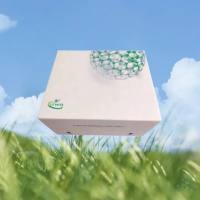Evaluation of Proliferation of Neural Stem Cells In Vitro and In Vivo
互联网
- Abstract
- Table of Contents
- Materials
- Figures
- Literature Cited
Abstract
This unit describes two basic protocols for the detection of the proliferation of neural stem cells (NSC). The first one addresses cell proliferation in cultures, starting with primary cell cultures isolated from the mouse subventricular zone (SVZ), in which SVZ?derived NSC are kept in culture as neurospheres. By using this culture system, we are able to study different stages of adult neurogenesis, such as proliferation, differentiation, migration, and survival. Thus, in the first basic protocol, we describe two different techniques to evaluate cell proliferation based on EdU incorporation: (a) immunocytochemistry and (b) flow cytometry. EdU, a new thymidine analog, which is detected by a reproducible and sensitive method based on click chemistry, does not require DNA denaturation, as is the case with BrdU. Thus, co?labeling of EdU with other specific antibodies of extracellular or intracellular targets, as well as other DNA dyes, is possible. In the second basic protocol, we describe an in vivo assay to evaluate proliferation of NSC in the dentate gyrus of hippocampus of adult mice, by both BrdU and EdU detection. With this approach, it is also possible to study different stages of adult neurogenesis, by co?labeling thymidine analogs with other specific markers, such as doublecortin (DCX) or neuronal nuclei protein (NeuN). Curr. Protoc. Stem Cell Biol. 24:2D.14.1?2D.14.24. © 2013 by John Wiley & Sons, Inc.
Keywords: EdU; BrdU; proliferation; subventricular zone; hippocampus
Table of Contents
- Introduction
- Basic Protocol 1: Evaluation of Cell Proliferation in SVZ Cultures
- Support Protocol 1: Fixation of SVZ‐Derived NSC Cultures with PFA
- Basic Protocol 2: EdU Detection by Fluorescence Microscopy
- Alternate Protocol 1: EdU Detection by Flow Cytometry
- Support Protocol 2: Preparation of Gelatin‐Coated Slides
- Basic Protocol 3: Evaluation of Cell Proliferation in Brain Tissue
- Reagents and Solutions
- Commentary
- Literature Cited
- Figures
- Tables
Materials
Basic Protocol 1: Evaluation of Cell Proliferation in SVZ Cultures
Materials
Support Protocol 1: Fixation of SVZ‐Derived NSC Cultures with PFA
Materials
Basic Protocol 2: EdU Detection by Fluorescence Microscopy
Materials
Alternate Protocol 1: EdU Detection by Flow Cytometry
Materials
Support Protocol 2: Preparation of Gelatin‐Coated Slides
Materials
Basic Protocol 3: Evaluation of Cell Proliferation in Brain Tissue
Materials
|
Figures
-
Figure 2.D1.1 EdU labeling in cells isolated from the neonatal mouse subventricular zone (scale bar: 40 µm). Cell nuclei were labeled with Hoechst 33342. View Image -
Figure 2.D1.2 Example of EdU labeling (white) of cultured neural stem cells expressing enhanced green fluorescent protein under the control of the actin promoter (GFP, green) co‐cultured with microglial cells (CD11b, red). EdU labeling was performed before the immunocytochemistry against CD11b. Nuclei were labeled with Hoechst 33342 (blue). Scale bar: 20 µm. View Image -
Figure 2.D1.3 Evaluation of cultured SVZ cell proliferation and cell cycle analysis by flow cytometry. (A ) DNA histogram of SVZ cultured cells and cell cycle phases identification as follows: G0/G1 (growth phase, 2N); S (DNA synthesis, 2N); and G2/M (DNA repairing and cell preparation for the coming mitosis). (B ) Contour plot representing EdU and 7‐AAD fluorescence of DNA content of an SVZ control culture. The cells were exposed to EdU for 4 hr before being harvested, followed by fixation with 70% ethanol and then stained with Alexa Fluor 488 azide and 7‐AAD. The cell cycle phases were clearly identified in the DNA histograms and respective contour plots. Abbreviation: a.f.u., arbitrary fluorescence units. View Image -
Figure 2.D1.4 Example of an experimental timeline for migration of newborn cells using both BrdU (days 1 to 3) and EdU labeling (day 11, before sacrifice of the animals on day 12). EdU given on the day prior to sacrifice allows the assessment of cell proliferation in addition to cell migration. The time between administration of the 2 thymidine analogs changes according to the experiment in question. View Image -
Figure 2.D1.5 BrdU double‐ (A ) or triple‐ (B ) labeling in the dentate gyrus of mouse hippocampal brain sections (scale bar: 40 µm). Cell nuclei were labeled with NeuN and migrating neuroblasts with doublecortin (DCX). View Image -
Figure 2.D1.6 Example of EdU labeling in the dentate gyrus of a mouse hippocampal brain section (scale bar: 40 µm). Cell nuclei were labeled with Hoechst 33342. View Image -
Figure 2.D1.7 EdU labeling plus immunohistochemistry (IHC) with double labeling in the dentate gyrus of mouse hippocampal brain sections (scale bar: 40 µm). Astrocytes were labeled with glial fibrillary acidic protein (GFAP) and neurons were labeled with NeuN. EdU labeling was performed before the IHC. Nuclei were labeled with Hoechst 33342. View Image
Videos
Literature Cited
| Literature Cited | |
| Agasse, F., Bernardino, L., Kristiansen, H., Christiansen, S.H., Ferreira, R., Silva, B., Grade, S., Woldbye, D.P., and Malva, J.O. 2008. Neuropeptide Y promotes neurogenesis in murine subventricular zone. Stem Cells 26:1636‐6345. | |
| Altman, J. 1969. Autoradiographic and histological studies of postnatal neurogenesis. IV. Cell proliferation and migration in the anterior forebrain, with special reference to persisting neurogenesis in the olfactory bulb. J. Comp. Neurol. 137:433‐457. | |
| Altman, J. and Das, G.D. 1965. Autoradiographic and histological evidence of postnatal hippocampal neurogenesis in rats. J. Comp. Neurol. 124:319‐335. | |
| Alvarez‐Buylla, A. and Lim, D.A. 2004. For the long run: Maintaining germinal niches in the adult brain. Neuron 41:683‐686. | |
| Belluzzi, O., Benedusi, M., Ackman, J., and LoTurco, J.J. 2003. Electrophysiological differentiation of new neurons in the olfactory bulb. J. Neurosci. 23:10411‐10418. | |
| Bock, E., Moller, M., Nissen, C., and Sensenbrenner, M. 1977. Glial fibrillary acidic protein in primary astroglial cell cultures derived from newborn rat brain. FEBS Lett. 83:207‐211. | |
| Brown, J.P., Couillard‐Despres, S., Cooper‐Kuhn, C.M., Winkler, J., Aigner, L., and Kuhn, H.G. 2003. Transient expression of doublecortin during adult neurogenesis. J. Comp. Neurol. 467:1‐10. | |
| Caldwell, M.A. 2001. Recent advances in neural stem cell technologies. Trends Neurosci. 24:72‐74. | |
| Caldwell, M.A., He, X., Wilkie, N., Pollack, S., Marshall, G., Wafford, K.A., and Svendsen, C.N. 2001. Growth factors regulate the survival and fate of cells derived from human neurospheres. Nat. Biotechnol. 19:475‐479. | |
| Carlen, M., Cassidy, R.M., Brismar, H., Smith, G.A., Enquist, L.W., and Frisen, J. 2002. Functional integration of adult‐born neurons. Curr. Biol. 12:606‐608. | |
| Carreira, B.P., Morte, M.I., Inacio, A., Costa, G., Rosmaninho‐Salgado, J., Agasse, F., Carmo, A., Couceiro, P., Brundin, P., Ambrosio, A.F., Carvalho, C.M., and Araujo, I.M. 2010. Nitric oxide stimulates the proliferation of neural stem cells bypassing the epidermal growth factor receptor. Stem Cells 28:1219‐1230. | |
| Coligan, J.E., Kruisbeek, A.M., Margulies, D.H., Shevach, E.M., and Strober, W. (eds.). 2012. Current Protocols in Immunology. John Wiley & Sons, New York. | |
| Costa, M.R., Ortega, F., Brill, M.S., Beckervordersandforth, R., Petrone, C., Schroeder, T., Gotz, M., and Berninger, B. 2011. Continuous live imaging of adult neural stem cell division and lineage progression in vitro. Development 138:1057‐1068. | |
| Curtis, M.A., Eriksson, P.S., and Faull, R.L. 2007. Progenitor cells and adult neurogenesis in neurodegenerative diseases and injuries of the basal ganglia. Clin. Exp. Pharmacol. Physiol. 34:528‐532. | |
| Doetsch, F. and Scharff, C. 2001. Challenges for brain repair: Insights from adult neurogenesis in birds and mammals. Brain Behav. Evol. 58:306‐322. | |
| Doetsch, F., Garcia‐Verdugo, J.M., and Alvarez‐Buylla, A. 1997. Cellular composition and three‐dimensional organization of the subventricular germinal zone in the adult mammalian brain. J. Neurosci. 17:5046‐5061. | |
| Draetta, G.F. 1994. Mammalian G1 cyclins. Curr. Opin. Cell Biol. 6:842‐846. | |
| Drapeau, E., Montaron, M.F., Aguerre, S., and Abrous, D.N. 2007. Learning‐induced survival of new neurons depends on the cognitive status of aged rats. J. Neurosci. 27:6037‐6044. | |
| Eisch, A.J. and Mandyam, C.D. 2007. Adult neurogenesis: Can analysis of cell cycle proteins move us “Beyond BrdU”? Curr. Pharm. Biotechnol. 8:147‐165. | |
| Eriksson, P.S., Perfilieva, E., Bjork‐Eriksson, T., Alborn, A.M., Nordborg, C., Peterson, D.A., and Gage, F.H. 1998. Neurogenesis in the adult human hippocampus. Nat. Med. 4:1313‐1317. | |
| Gerdes, J., Lemke, H., Baisch, H., Wacker, H.H., Schwab, U., and Stein, H. 1984. Cell cycle analysis of a cell proliferation‐associated human nuclear antigen defined by the monoclonal antibody Ki‐67. J. Immunol. 133:1710‐1715. | |
| Gheusi, G., Cremer, H., McLean, H., Chazal, G., Vincent, J.D., and Lledo, P.M. 2000. Importance of newly generated neurons in the adult olfactory bulb for odor discrimination. Proc. Natl. Acad. Sci. U.S.A. 97:1823‐1828. | |
| Girolamo, F., Strippoli, M., Errede, M., Benagiano, V., Roncali, L., Ambrosi, G., and Virgintino, D. 2010. Characterization of oligodendrocyte lineage precursor cells in the mouse cerebral cortex: A confocal microscopy approach to demyelinating diseases. Ital. J. Anat. Embryol. 115:95‐102. | |
| Golmohammadi, M.G., Blackmore, D.G., Large, B., Azari, H., Esfandiary, E., Paxinos, G., Franklin, K.B., Reynolds, B.A., and Rietze, R.L. 2008. Comparative analysis of the frequency and distribution of stem and progenitor cells in the adult mouse brain. Stem Cells 26:979‐987. | |
| Gould, E., Beylin, A., Tanapat, P., Reeves, A., and Shors, T.J. 1999a. Learning enhances adult neurogenesis in the hippocampal formation. Nat. Neurosci. 2:260‐265. | |
| Gould, E., Reeves, A.J., Graziano, M.S., and Gross, C.G. 1999b. Neurogenesis in the neocortex of adult primates. Science 286:548‐552. | |
| Hamelik, R.M. and Krishan, A. 2009. Click‐iT assay with improved DNA distribution histograms. Cytometry A 75:862‐865. | |
| Hofman, F. 2002. Immunohistochemistry. Curr. Protoc. Immunol. 49:21.4.1‐21.4.23. | |
| Irvin, D.K., Dhaka, A., Hicks, C., Weinmaster, G., and Kornblum, H.I. 2003. Extrinsic and intrinsic factors governing cell fate in cortical progenitor cultures. Dev. Neurosci. 25:162‐172. | |
| Kaneko, N. and Sawamoto, K. 2009. Adult neurogenesis and its alteration under pathological conditions. Neurosci. Res. 63:155‐164. | |
| Kawabe, T., Suganuma, M., Ando, T., Kimura, M., Hori, H., and Okamoto, T. 2002. Cdc25C interacts with PCNA at G2/M transition. Oncogene 21:1717‐1726. | |
| Kempermann, G. and Gage, F.H. 2000. Neurogenesis in the adult hippocampus. Novartis Found. Symp. 231:220‐235; discussion 235‐241, 302‐226. | |
| Kempermann, G., Gast, D., Kronenberg, G., Yamaguchi, M., and Gage, F.H. 2003. Early determination and long‐term persistence of adult‐generated new neurons in the hippocampus of mice. Development 130:391‐399. | |
| Leuner, B., Glasper, E.R., and Gould, E. 2009. Thymidine analog methods for studies of adult neurogenesis are not equally sensitive. J. Comp. Neurol. 517:123‐133. | |
| Limke, T.L. and Rao, M.S. 2002. Neural stem cells in aging and disease. J. Cell. Mol. Med. 6:475‐496. | |
| Ming, G.L. and Song, H. 2011. Adult neurogenesis in the mammalian brain: Significant answers and significant questions. Neuron 70:687‐702. | |
| Mizrahi, A., Lu, J., Irving, R., Feng, G., and Katz, L.C. 2006. In vivo imaging of juxtaglomerular neuron turnover in the mouse olfactory bulb. Proc. Natl. Acad. Sci. U.S.A. 103:1912‐1917. | |
| Morshead, C.M., Reynolds, B.A., Craig, C.G., McBurney, M.W., Staines, W.A., Morassutti, D., Weiss, S., and van der Kooy, D. 1994. Neural stem cells in the adult mammalian forebrain: A relatively quiescent subpopulation of subependymal cells. Neuron 13:1071‐1082. | |
| Morshead, C.M., Craig, C.G., and van der Kooy, D. 1998. In vivo clonal analyses reveal the properties of endogenous neural stem cell proliferation in the adult mammalian forebrain. Development 125:2251‐2261. | |
| Morshead, C.M., Benveniste, P., Iscove, N.N., and van der Kooy, D. 2002. Hematopoietic competence is a rare property of neural stem cells that may depend on genetic and epigenetic alterations. Nat. Med. 8:268‐273. | |
| Nowakowski, R.S., Lewin, S.B., and Miller, M.W. 1989. Bromodeoxyuridine immunohistochemical determination of the lengths of the cell cycle and the DNA‐synthetic phase for an anatomically defined population. J. Neurocytol. 18:311‐318. | |
| Nunez, R. 2001. DNA measurement and cell cycle analysis by flow cytometry. Curr. Issues Mol. Biol. 3:67‐70. | |
| Okano, H.J., Pfaff, D.W., and Gibbs, R.B. 1993. RB and Cdc2 expression in brain: Correlations with 3H‐thymidine incorporation and neurogenesis. J. Neurosci. 13:2930‐2938. | |
| Palmer, T.D., Schwartz, P.H., Taupin, P., Kaspar, B., Stein, S.A., and Gage, F.H. 2001. Cell culture: Progenitor cells from human brain after death. Nature 411:42‐43. | |
| Parmar, M., Sjoberg, A., Bjorklund, A., and Kokaia, Z. 2003. Phenotypic and molecular identity of cells in the adult subventricular zone in vivo and after expansion in vitro. Mol. Cell. Neurosci. 24:741‐752. | |
| Petreanu, L. and Alvarez‐Buylla, A. 2002. Maturation and death of adult‐born olfactory bulb granule neurons: Role of olfaction. J. Neurosci. 22:6106‐6113. | |
| Pollard, S., Conti, L., and Smith, A. 2006a. Exploitation of adherent neural stem cells in basic and applied neurobiology. Regen. Med. 1:111‐118. | |
| Pollard, S.M., Benchoua, A., and Lowell, S. 2006b. Neural stem cells, neurons, and glia. Methods Enzymol. 418:151‐169. | |
| Reynolds, B.A. and Rietze, R.L. 2005. Neural stem cells and neurospheres—re‐evaluating the relationship. Nat. Methods 2:333‐336. | |
| Reynolds, B.A. and Weiss, S. 1992. Generation of neurons and astrocytes from isolated cells of the adult mammalian central nervous system. Science 255:1707‐1710. | |
| Reynolds, B.A. and Weiss, S. 1996. Clonal and population analyses demonstrate that an EGF‐responsive mammalian embryonic CNS precursor is a stem cell. Dev. Biol. 175:1‐13. | |
| Rochefort, C., Gheusi, G., Vincent, J.D., and Lledo, P.M. 2002. Enriched odor exposure increases the number of newborn neurons in the adult olfactory bulb and improves odor memory. J. Neurosci. 22:2679‐2689. | |
| Rostovtsev, V.V., Green, L.G., Fokin, V.V., and Sharpless, K.B. 2002. A stepwise huisgen cycloaddition process: Copper(I)‐catalyzed regioselective “ligation” of azides and terminal alkynes. Angew. Chem. Int. Ed. Engl. 41:2596‐2599. | |
| Salic, A. and Mitchison, T.J. 2008. A chemical method for fast and sensitive detection of DNA synthesis in vivo. Proc. Natl. Acad. Sci. U.S.A. 105:2415‐2420. | |
| Sanai, N., Tramontin, A.D., Quinones‐Hinojosa, A., Barbaro, N.M., Gupta, N., Kunwar, S., Lawton, M.T., McDermott, M.W., Parsa, A.T., Manuel‐Garcia Verdugo, J., Berger, M.S., and Alvarez‐Buylla, A. 2004. Unique astrocyte ribbon in adult human brain contains neural stem cells but lacks chain migration. Nature 427:740‐744. | |
| Shingo, T., Gregg, C., Enwere, E., Fujikawa, H., Hassam, R., Geary, C., Cross, J.C., and Weiss, S. 2003. Pregnancy‐stimulated neurogenesis in the adult female forebrain mediated by prolactin. Science 299:117‐120. | |
| Shors, T.J., Miesegaes, G., Beylin, A., Zhao, M., Rydel, T., and Gould, E. 2001. Neurogenesis in the adult is involved in the formation of trace memories. Nature 410:372‐376. | |
| Suslov, O.N., Kukekov, V.G., Ignatova, T.N., and Steindler, D.A. 2002. Neural stem cell heterogeneity demonstrated by molecular phenotyping of clonal neurospheres. Proc. Natl. Acad. Sci. U.S.A. 99:14506‐14511. | |
| Vernadakis, A., Mangoura, D., Sakellaridis, N., and Linderholm, S. 1984. Glial cells dissociated from newborn and aged mouse brain. J. Neurosci. Res. 11:253‐262. | |
| Vukicevic, V., Jauch, A., Dinger, T.C., Gebauer, L., Hornich, V., Bornstein, S.R., Ehrhart‐Bornstein, M., and Muller, A.M. 2010. Genetic instability and diminished differentiation capacity in long‐term cultured mouse neurosphere cells. Mech. Ageing Dev. 131:124‐132. | |
| Whitney, N.P., Eidem, T.M., Peng, H., Huang, Y., and Zheng, J.C. 2009. Inflammation mediates varying effects in neurogenesis: Relevance to the pathogenesis of brain injury and neurodegenerative disorders. J. Neurochem. 108:1343‐1359. | |
| Wu, J., Ohlsson, M., Warner, E.A., Loo, K.K., Hoang, T.X., Voskuhl, R.R., and Havton, L.A. 2008. Glial reactions and degeneration of myelinated processes in spinal cord gray matter in chronic experimental autoimmune encephalomyelitis. Neuroscience 156:586‐596. | |
| Yoshikawa, K. 2000. Cell cycle regulators in neural stem cells and postmitotic neurons. Neurosci. Res. 37:1‐14. | |
| Zeng, C., Pan, F., Jones, L.A., Lim, M.M., Griffin, E.A., Sheline, Y.I., Mintun, M.A., Holtzman, D.M., and Mach, R.H. 2010. Evaluation of 5‐ethynyl‐2′‐deoxyuridine staining as a sensitive and reliable method for studying cell proliferation in the adult nervous system. Brain Res. 1319:21‐32. |









